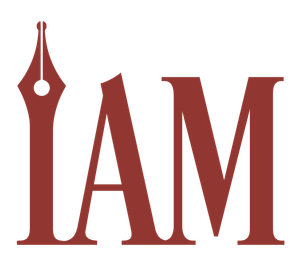First Person Point of View
A first person narrator is often the protagonist; reading “I” or “We” in the sentence structure makes that obvious, as does relying on first person pronouns.
First person can provide intimacy and a deeper look into the character’s mind. This limits the story to the perspective abilities of the character, so the reader only knows what the character knows, which means their viewpoint could be biased. This could lead to an unreliable narrator, which may be deliberate or evasive, or the character could simply be naïve.
First person POV is often found in Young Adult, Romance, and Cozy Mysteries, for varying reasons. The intimacy of first person works well in the Young Adult (YA) and Coming of Age genres, where emotional themes such as angst and isolation are at play, with access to the psyches and inner thoughts, and delve the readers into character development.
Many Romance novels put this POV to good use, often featuring scenes from both of the main characters to give an intimate, but fuller perspective.
Cozy Mysteries make readers feel as though they are right there solving the mystery alongside the main character.
Second Person Point of View
Second person POV is less common and is told through the pronoun “You.” It can allow you to draw the reader into the story and make them feel like they are part of the action because the narrator is speaking directly to them. It puts the reader directly in the headspace of a particular character, either the protagonist or a secondary figure.
Second person is the least popular POV because it can require a large suspension of disbelief by the reader. It is more suited to shorter lyrical pieces of writing (like poetry) as it can appear impressive and technically accomplished, but can be used in novel length prose as a means of variety if used for just a portion of the story.
N. K. Jemisin’s Broken Earth trilogy pulls off this voice beautifully as the narrator separates herself from a mother’s grief. The middle grade genre of “Choose Your Own Adventure” novels uses the second person POV to engage the reader with the story—making the choices feel real and meaningful. Connor Hoover’s Pick Your Quest series is an outstanding example of this.
Third Person Limited Point of View
The pronouns identifying third person limited POV are “He,” “She,” “It,” and “They.” Termed “limited” because the author stays close to one character, the reader can be inside the character’s thoughts and feelings, and can experience the story and setting from the bias of that character’s perspective.
It works well in Romance; giving only one side of a will-they-won’t-they story is a brilliant way to add intrigue and suspense. This element of “not knowing” mimics love in real life, anguish-inducing and relatable.
Third person narratives in popular fiction have mainstream appeal, written from the close POV of one character.
Third person limited POV is clear and effective, making it a popular way to tell a story by fostering an emotional closeness between the character and the readers. Stone of Fire by J.F. Penn is a prime example of the third person limited point of view.
Third Person Omniscient Point of View
Third Person Omniscient is the “All knowing” narrator. Their view is not limited to just one character’s perspective but can reveal anything that is happening, has happened, or will happen. It is useful for the author to pan out beyond a single character’s perspective, allowing new information to be introduced beyond the protagonist’s comprehension while establishing a similar intimacy level as first person POV. This allows the narrative to break away from the action to provide insight into events to get the bigger picture. Using an omniscient POV can reveal information and events that might be outside the protagonist’s comprehension, adding rich texture to the plot, or focusing on finer details of the story or character. Fantasy stories that require extensive world-building and rich descriptions of the appearance, values, and lore of the fantasy world will use this POV, where it can seem unnatural for all of this to come from one character.
Often authors will alternate between the omniscient and the limited when sections of the book call for the broader view. The Martian by Andy Weir is mostly in first person; the readers’ insight comes from “reading” the diary of Mark Watney. But there are scenes which are clearly omniscient as Watney isn’t present—or any character at all, as in the scene explaining the production of important materials. The reader needs to be given this information, but we don’t have a character available to tell us.
What Is the Difference Between Third Person Omniscient and Third Person Limited?
The omniscient narrator knows everything about the story and its characters. This third person narrator can enter anyone’s mind, move freely through time, and give the reader their own opinions and observations and those of the characters. This narrator also knows more than the characters—think of the omniscient narrator as having a gods-eye-view of the characters. (“They had infected him with the virus, but he didn’t know it yet.”)
Choosing Your Point of View
To tell which point of view is being used, identify the most commonly used pronouns in the piece:
- Third person uses he/she/they: “They had decided to have breakfast tomorrow morning, but she wasn’t invited."
- Second person is told through you: “You crack open the door of the mansion, and you find a woman sitting alone on a chair.”
- First person employs I or we: “When I heard her name, I felt a strange sensation in my stomach.”
Knowing which is best for your story often requires trial and error. Sit down with a key scene and write it from each POV and see how it feels. Does one sing more than the others? Consider what is popular in your genre. Will readers embrace something completely different?
When it comes down to it, point of view is all about what works best for your story and your characters.


